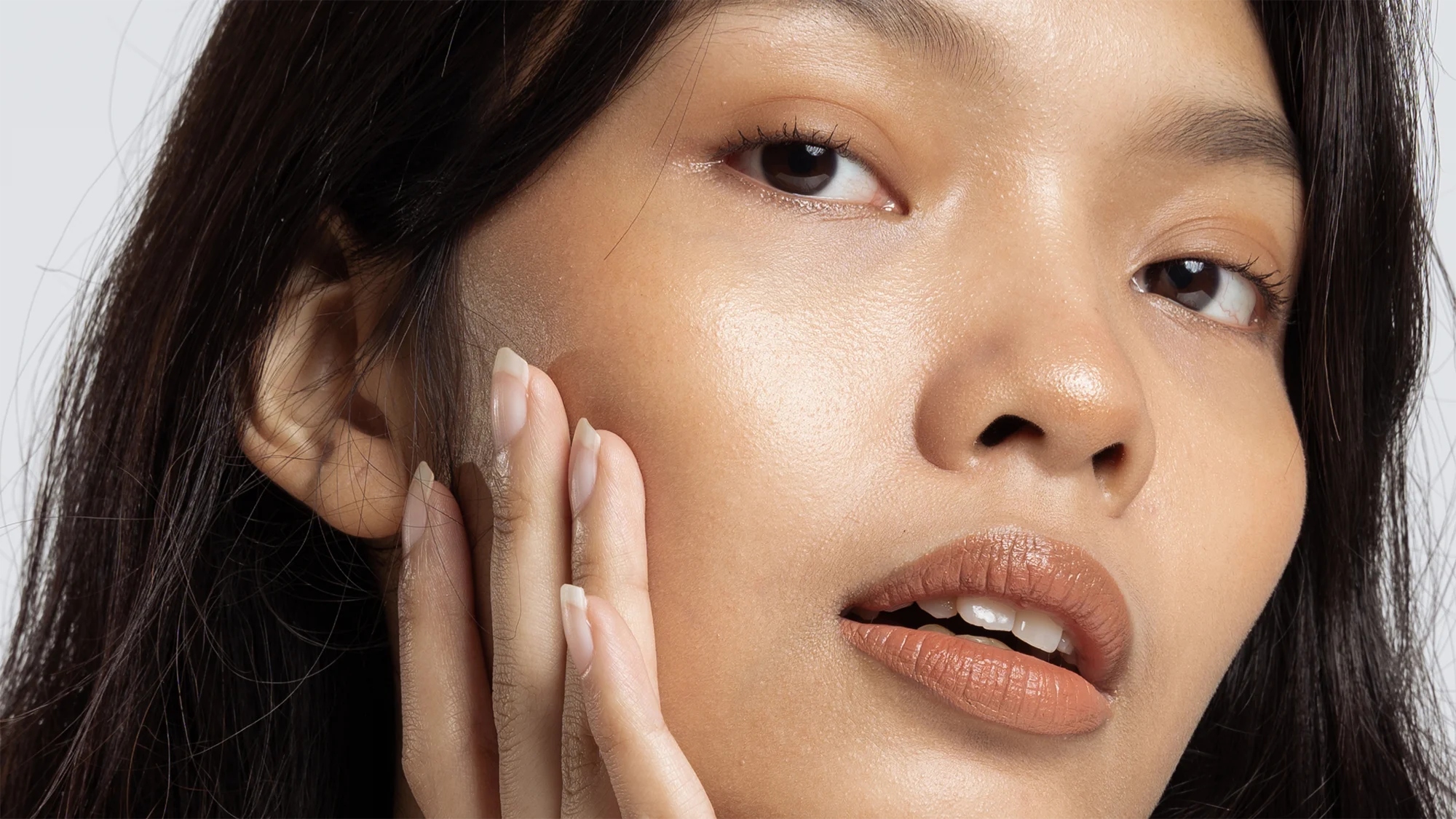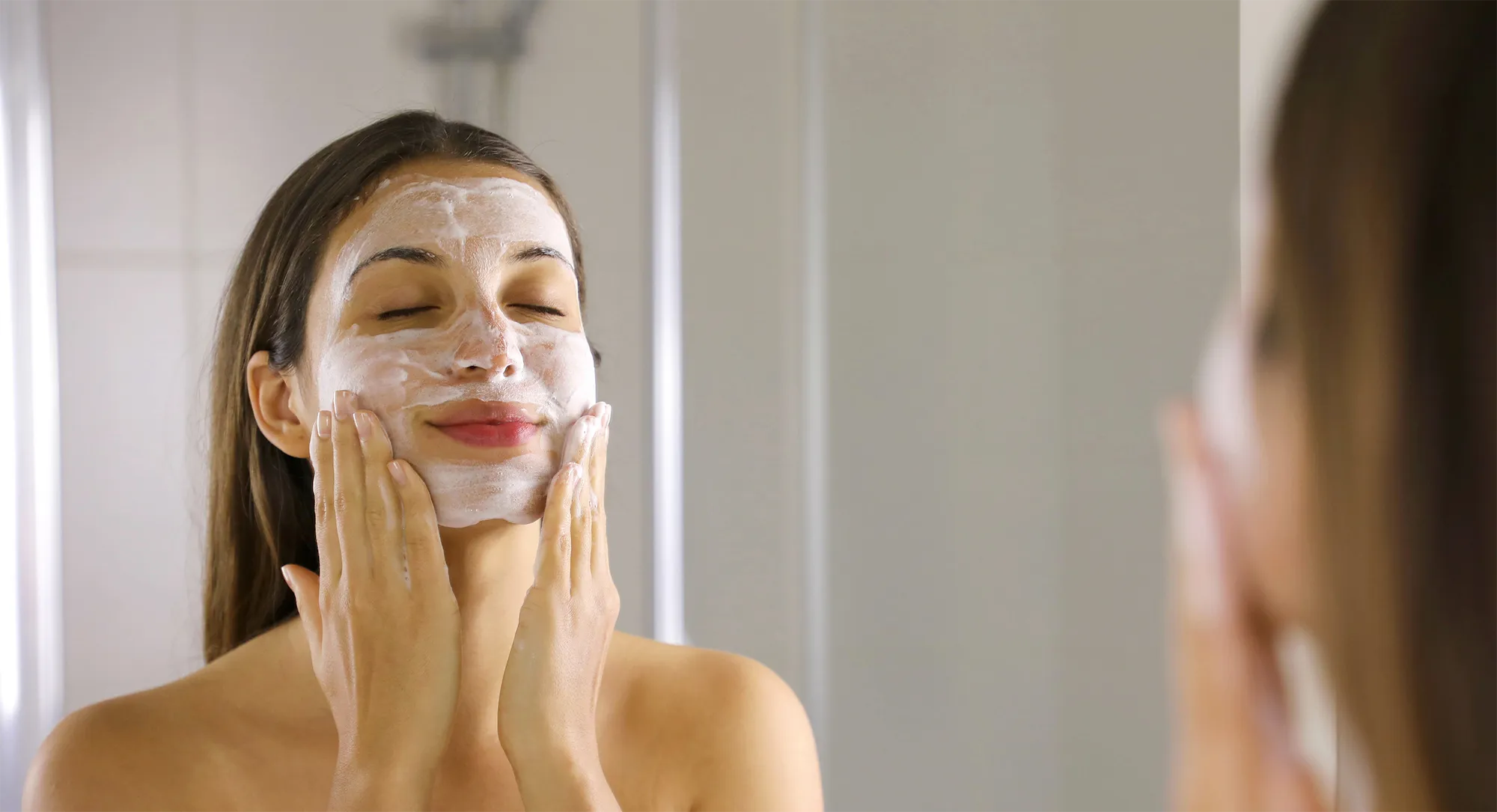Part 3 of our Deep Guide to Retinoids.
Today we grapple with the conundrum: Retinol, Retinal, or Tretinoin - which retinoid reigns supreme?
Retinoids, though belonging to the same family, have distinct personalities. This article will take us through the intricacies of these profiles - examining potency and irritation profiles separately then weighing them together to discern the optimal retinoid.
If you wish to leap ahead to the conclusion of our discussion: we have found that Retinal - or Retinaldehyde, as it is also known - emerges as the champion. It boasts a potency comparable to Tretinoin (aka Retinoic Acid), and its tolerance profile rivals, if not surpasses, that of Retinol.
Let's demystify these skincare heroes, one molecule at a time.
Which retinoid is the most potent?
The body of scientific literature we've compiled suggests that tretinoin may be, not just marginally, but potentially 10 to 20 times more potent than retinol. And, standing shoulder to shoulder with tretinoin in terms of potency, we find retinaldehyde, or retinal.
To translate this into a practical scenario - if one were to seek the same level of results from retinol as those experienced with retinal or tretinoin, they would require a concentration of retinol that's 10 to 20 times higher.
Now, one might wonder why such a stark disparity in potency exists between retinol and tretinoin, while retinal and tretinoin are near equals. The answer is found in the fascinating world of enzymes.
Two conversions versus one
Remember from the Deep Guide to Retinoids Part 1 that that retinol undergoes a transformation to become retinal, which subsequently is converted into retinoic acid.
In essence, retinol has to undergo two stages of conversion.
In contrast, retinal only needs a single transformation.
Retinoic acid, on the other hand, is all set and ready to go, requiring no conversion whatsoever.
Retinol -> Retinal (retinaldehyde) -> Retinoic Acid (tretinoin)
The crux of the matter lies in understanding that all these conversions are not created equal.
The rate-limiting step in going from retinol to retinal
The reason behind retinol's significantly lower potency compared to retinal or retinoic acid lies in its conversion process to retinal, which is notably ineffective - a situation we call "rate-limiting".
Think of it as attempting to Facetime over a spotty cell reception - the connection is patchy, and not much gets through.
A quick note: In biochemistry, an enzymatic reaction is said to be "rate-limiting" when it is the slowest step in a metabolic pathway. This step, often a biochemical reaction involving an enzyme, essentially determines the overall rate at which the pathway proceeds. If this step is slow, it slows down the entire process, regardless of how fast the other steps in the pathway might be.
For example, in the conversion of retinol to retinal, the enzyme that mediates this conversion is often the rate-limiting step. This means that this step happens relatively slowly, limiting the overall speed at which retinol can be converted into retinal. This inefficiency leads to retinol being less potent than retinal or retinoic acid, as the conversion to the active form (retinoic acid) is not as efficient.
On the other hand, the process that transforms Retinal into Retinoic Acid is impressively efficient. It's like video-calling using a fast Wi-Fi connection or a 5G network - data goes right through.
As Retinal requires one fewer stage of conversion, and given that this remaining conversion is so effective, Retinal stands out as considerably more potent than Retinol, and its effectiveness nearly matches that of prescription-grade Tretinoin.
Which retinoid is the most irritating?
Now, let's address the other side of this equation.
Retinoids have earned a reputation for sometimes causing skin irritation, which, despite their demonstrated effectiveness, might deter you from using them in high concentrations.
Broadly speaking, tretinoin tends to be the most irritating, while retinal usually causes the least discomfort.
Nonetheless, potent retinoids like tretinoin and retinal can lead to skin peeling and dryness in the initial few weeks of application.
If you're a newcomer to the world of retinoids, you might prefer starting with retinol, as it is milder and thus less likely to cause peeling and dryness. Remember, its gentleness is a result of its weaker potency.
Before we go further, let's get to know 3 types of irritation you can get from retinoids.
First, they can cause redness, a condition medically referred to as erythema.
Second, they can lead to scaling, which manifests as skin peeling and flaking.
Finally, they can trigger sensations of burning and itchiness, a symptom referred to as pruritus in medical terms.
Fluhr and colleagues study (1999) - How different retinoids cause different irritations
Let’s understand irritation profiles better by diving deep into a scientific paper that explores the various types of irritation caused by different types of topical retinoids.
This paper, published by Fluhr and colleagues in 1999, comprises two separate studies. Let’s go through them in detail.

The first study in question involved a daily regimen over a span of two weeks, where 0.07% Retinol, 0.05% Retinal, and 0.05% Retinoic Acid were applied to the forearm skin of six male participants.
Then a dermatologist rated for each of the three types of irritation using a rating scale: 0 as absent, 1 as slight, 2 as moderate, and 3 as severe.
In Figure 1 here, the Y Axis is the sum of those scores. So higher bars means more irritation.
Erythema is in white bars, scaling in grey bars, and burning in black bars.

You can see that 0.05% retinoic acid is the most irritating overall with the greatest amount of erythema and peeling.

But in terms of burning and itching, retinol was the worst despite the low concentration of 0.7%.

It's noteworthy that 0.05% Retinal resulted in less redness and burning sensation compared to both 0.07% Retinol and 0.05% Retinoic Acid. Impressively, the application of Retinal in this study didn't report any instances of burning sensation at all.
In terms of causing redness and sensations of burning or itching, Retinal proved to be the gentlest among the tested retinoids.

We can see here that retinal and retinoic acid are about the same in terms of scaling and peeling of the skin. And the reason is simple - generally speaking, the stronger the retinoid, the more scaling there is during the early days.

Think of retinoids as your skin's own personal trainer. They're like a tough-love coach that pushes your skin to shed its old, worn-out surface and grow fresh, new layers. This process can make your skin seem flaky and dry, a bit like how a tough workout can leave you feeling sore.
The stronger the retinoid, the more intense this "workout" for your skin, so you might notice more of this dryness and flakiness. But just like with exercise, it's all part of the process of getting healthier, better-looking skin.
Using a milder retinoid is like opting for lighter weights at the gym. You'll still get a workout, but it won't be as intense, so you'll experience less of that initial flaky, dry "skin-soreness". This is because a less potent retinoid doesn't exfoliate your skin quite as much.
Just like how your body gets stronger with regular workouts and the soreness lessens, your skin also adapts to regular retinoid use and the dryness and flaking start to fade.
Now, let's dive into how this adjustment process happens and how your skin's reaction to retinoids changes over time.
Fluhr and colleagues study (1999) - How irritations fade over time
In the second study, spearheaded by Fluhr and his team, they took a longer-term view and tracked changes in skin irritation over a whopping 44 weeks (the first was over a period of 2 weeks).
During this nearly year-long period, they tested 355 patients with both 0.05% retinal and 0.05% retinoic acid, as well as a control vehicle (think of this as a skincare placebo). Note, retinol wasn't part of this particular study, so it's a straight-up comparison between retinal and tretinoin.
Let's focus on Chart A, which illustrates the outcomes after the first month of treatment.
As expected, retinoic acid didn't pull any punches when it came to skin irritation. Close to half the subjects (44%) experienced redness, over a third (35%) had skin peeling and scaling, and about 29% reported feelings of burning and itching.
On the flip side, retinal adjusted very quickly, causing irritation in less than 10% of participants across all categories after four weeks.
And after 18 weeks, irritations had subsided for most subjects for both retinal and retinoic acid.
So this suggests retinoid-induced irritation that will naturally resolve over time for most of the patients.

Going even further out, by 44 weeks you see that compared to 4 weeks and 18 weeks, even fewer test subjects experienced any irritation.
Overall, what we found striking is how much less irritating retinal is compared to retinoic acid. This is why we like retinal so much here at Maelove.

What conclusions can we draw from the studies conducted by Fluhr and his team?
Well, it's quite evident that retinoic acid takes the crown for being the most irritating - no wonder that it's only available via prescription.
On the other hand, even a very low concentration of retinol (0.07%) has a high tendency to cause irritation, particularly in the form of uncomfortable burning sensations.
But let's talk about retinal. Despite being highly potent, it's surprisingly gentle on the skin, showing high overall tolerability. This is precisely why we stand by retinal as the preferred choice over retinol or retinoic acid.
However,If you’re new to retinoids, you might still want to use retinol instead of retinal.
Because as you can see again in this chart, during the initial couple weeks you might experience much more peeling and dryness with retinal and retinoic acid that could be pretty uncomfortable.

However, well formulated products containing retinal and retinoic acid should be able to offset these with moisturizing ingredients.
If you are new to retinoids, it could make sense to begin with a weaker retinol product with around 0.1% to 0.25% concentration for several weeks until the peeling and dryness disappears, and then switch to the more potent retinal or retinoic acid product.
Now, let’s go in depth into the differences among retinol, retinal, and tretinoin that lead to differences in irritation profiles.
Why does retinoic acid (tretinoin) cause more erythema (skin reddening)?
You get more redness from topical tretinoin compared to retinol and retinal. That’s because tretinoin has something called carboxylic acid attached at its tail end. Carboxylic acid seems to cause skin irritation and redness when applied on the skin’s surface.

Retinol and retinal do not have carboxylic acid in their composition.
So when retinol or retinal is applied on the skin, there is no irritation on the skin’s surface caused by carboxylic acid.
We had mentioned earlier - in the part 1 of Deep Guide to Retinoids - that retinol and retinal undergo conversion to retinoic acid. But the conversion to retinoic acid happens inside the skin cells where carboxylic acid does not cause irritation problems.
What causes the burning sensation?
Ever wondered why you feel a burning sensation when using retinoids?
It's because retinoids stimulate TRP receptors in your skin, tricking your brain into feeling a "burn".
Now, TRP receptors are essentially nerve endings. If you've ever felt that cooling rush when applying menthol to your skin - that's your TRP receptors being triggered by the menthol.
When you apply retinol and tretinoin at the same dosage, they stimulate the TRP receptors to a similar extent.
However, retinal is a bit of a game changer. It's softer on the TRP receptors than both retinol and tretinoin. How do we know this?
Let's take a look at this figure taken from a study conducted by Luo and his team.

Unfortunately this chart is rather overwhelming with a ton of content on it. The huge orange bars are 9-CIS-Retinoic acid or alitretinoin. It’s a retinoid used to treat AIDS related Kaposi’s Sarcoma. And it’s VERY irritating.
In the chart, retinol is represented by the green bars while tretinoin, denoted as ATRA or all-trans retinoic acid, is indicated by the dark blue bars. As you'll observe, both retinol and tretinoin are equally potent when it comes to stimulating TRP receptors, thus causing irritation.
On the other hand, you'll notice that retinal, symbolized by the bright pink bars, is much less likely to stimulate TRP receptors, leading to less irritation.
It's crucial to remember that in the majority of skincare products, retinol concentrations tend to be considerably higher than those of tretinoin - often by a factor of five to ten times.
As such, it's not difficult to envision how retinol could potentially cause a significantly greater sensation of burning compared to both retinal and tretinoin.
What causes peeling and flaking?
Retinoids essentially push a reboot button on your skin's cell renewal cycle, leading to some initial surface disruption.
Here's the science behind it. When you apply retinoids to your skin, they disrupt the organization of corneocytes – the dead cells that form the outermost layer of your skin.
Think of your skin's renewal cycle as a sort of conveyor belt.
The formation of corneocytes – the dead cells that make up your skin's surface – happens through a process known as keratinization. Fresh skin cells are born in the lowest layer of the epidermis, known as the basal epidermis. As newer cells are formed underneath, the older cells are pushed out towards the skin's surface.
Imagine these rising skin cells as they approach the surface of your skin - they go through a transformation. As they die, they lose their nuclei, flatten out, and fill up with keratin. Now, these transformed, dead cells are what we call corneocytes.
In a perfect world - particularly for younger folks - these corneocytes shed off naturally, renewing the entire epidermis layer roughly every 30 days. This natural shedding process is known as desquamation.
Now, here's where retinoids come into play: they assist and regulate this desquamation process.
But there's a catch. When you first begin using retinoids, this initial phase of rebooting desquamation can cause irritation. You might notice your skin peeling and flaking in the early weeks of retinoid use. It's the old surface cells peeling away before the new skin renewal process has had the chance to stabilize.
Additionally, your skin might feel drier and more irritated during this phase, and it's more vulnerable to the sun.
However, it's not all bad news. This phase of skin peeling is typically short-lived, as your skin adjusts to its new rhythm of regeneration. Niacinamide will help lessen the dryness felt during this process, which is why we recommend using retinoids with niacinamide.
Similarly, while your skin will be extra sensitive to the sun at the beginning, it will normalize over a period of a few months.
That’s it for today’s discussion -the Part 3 of Deep Guide to Retinoids. In Part 4, we’re going to answer the question: how fast do retinoids work and how long would it take for me to notice changes in my skin? See you again soon and have a wonderful day!!
Relevant products
Maelove Moonlight Retinal Super Serum
Maelove Stargaze Enhanced Retinol Serum
Maelove NIA 10 Niacinamide Calming Serum
References
Fluhr JW, Vienne MP, Lauze C, Dupuy P, Gehring W, Gloor M (1999). “Tolerance Profile of Retinol, Retinaldehyde and Retinoic Acid under Maximized and Long-term Clinical Conditions.” Dermatology 199(suppl 1): 57-60.
Luo J, Clark R, Yang Q, Du G, Zhou S, Yu W, Qian A, Walters E, Carlton S, Hu H (2013). “Retinoids activate the irritant receptor TRPV1 and produce sensory hypersensitivity.” The Journal of clinical investigation DOI: 10.1172/JCI66413




